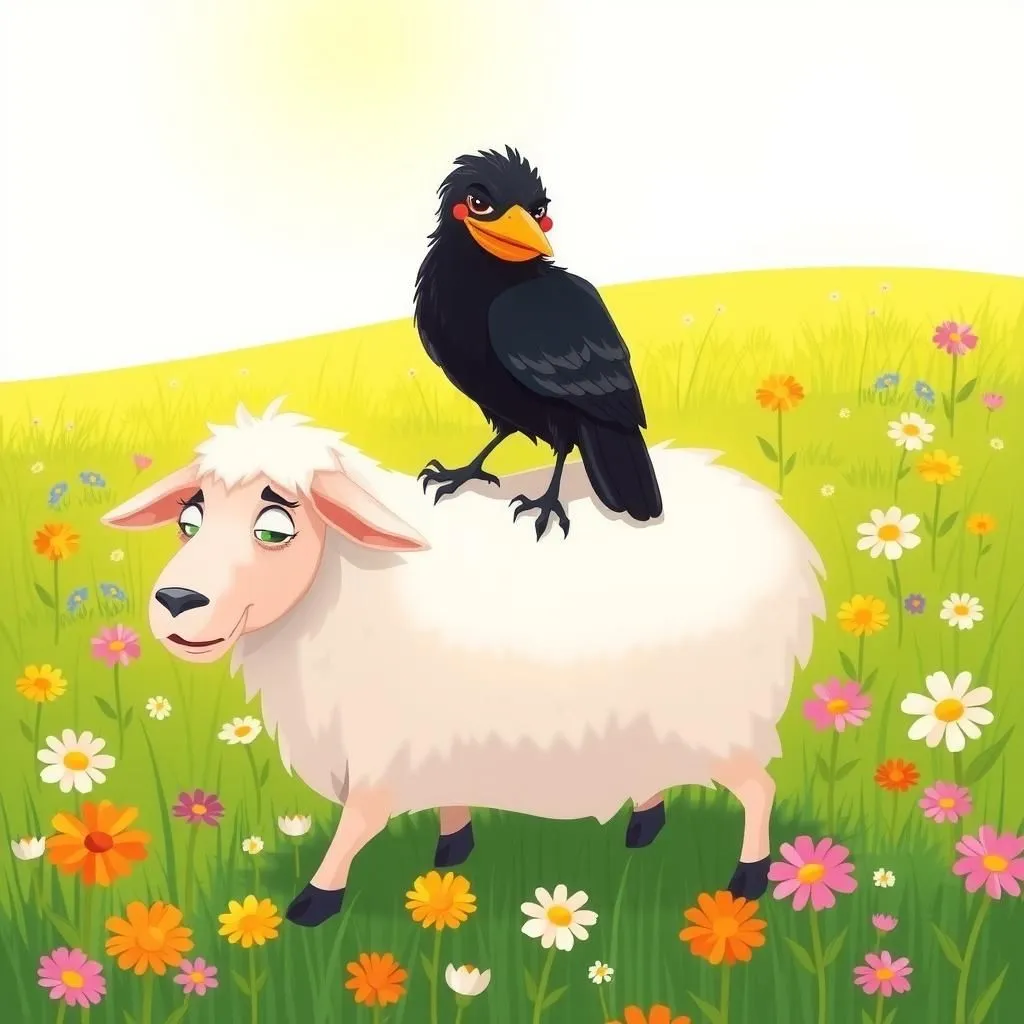
The Crow and the Sheep
In the very short moral story "The Crow and the Sheep," a troublesome crow humorously bullies a sheep by riding on its back, showcasing her tendency to target the weak while avoiding stronger animals. The sheep points out that such behavior would not be tolerated by a dog, but the crow justifies her actions, claiming they help her survive. This easy small story with moral lessons highlights the importance of recognizing true strength and the consequences of bullying.


